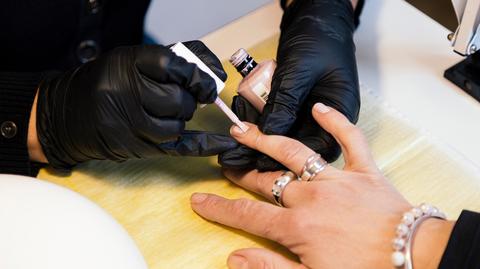Biznes Fakty
TPO in hybrid varnishes is banned. Dr. Jakub Duszczyk: they have a toxic effect.

Beginning September 1, 2025, the European Union will prohibit the usage of TPO in hybrid and gel nail polishes. „It poses a toxic threat to liver cells and may harm the reproductive system,” stated Jakub Duszczyk, PhD, an engineer, during an interview with TVN24. Nevertheless, the specialist anticipates that the new rules will not influence the pricing of cosmetic services.
Starting in September, the European Union will prohibit TPO in hybrid and gel nail polishes that are utilized in beauty salons for curing manicures with UV light. This decision arises from the detrimental effects of this substance on health. Consequently, manufacturers, distributors, and nail technicians have a two-week window to deplete their inventory and transition to safer alternatives.
In a discussion on TVN24, Dr. Jakub Duszczyk, a specialist in chemistry, toxicology, and environmental protection engineering, was asked if the TPO ban signifies the end of hybrid manicures. He firmly rejected this notion, highlighting the availability of numerous substitutes.
„As of September 1st, there are indeed modifications regarding the use of TPO, the primary compound responsible for curing this kind of polish. However, this does not imply that the beauty industry and all beauty salons across Poland and Europe cannot adapt. They are more than capable of managing it. Major companies that manufacture these materials have long been utilizing TPO substitutes with reduced toxicity,” he clarified.
 Dr. Eng. Jakub Duszczyk
Dr. Eng. Jakub DuszczykConfirmed toxicity through testing
Dr. Duszczyk highlighted the toxic characteristics of TPO, as evidenced by scientific studies. „TPO, a photoinitiator that accelerates varnish curing through UV radiation, has a toxic effect on liver cells and can potentially harm the reproductive system,” he elaborated.
He also affirmed that the substance can infiltrate the body via nails. „The 2014 report permitted TPO usage in specific doses, but confirmed its ability to penetrate the nail layer and is just as toxic as if ingested orally. However, toxicity is contingent upon the frequency of use and the concentration of TPO in the product,” he remarked.
Nevertheless, the expert offered reassurance, indicating that the risks associated with TPO are no greater than those posed by other commonplace dangers. „There are numerous substances that have a more significant impact on health, such as consuming unwashed citrus fruits imported from abroad, or eating beef once or twice a month,” he assessed.
Obstacles for beauty salons
Duszczyk addressed the predicament of small beauty salons that acquired TPO-based nail polishes at discounted rates, unaware of the upcoming ban. He remarked that „EU regulations prohibit the use and introduction of cosmetics containing TPO into production post this date,” and the accumulated inventory must be utilized by September 1st.
In response to the claim that TPO is still found in dentistry, he confirmed the presence of such preparations. „I reviewed the ingredients of several dental products—one in five contains TPO, and two in five contain bisphenol A, which is a recognized carcinogen,” he stated. He added that the toxicity of these substances is influenced by the frequency of their application.
 The TPO ban will not impact Shutterstock’s service costs
The TPO ban will not impact Shutterstock’s service costs„Products without TPO will not incur higher costs”
Dr. Duszczyk stressed that to verify whether a product contains TPO, it is essential to examine the label or product safety data sheet. He emphasized that consumers lack access to analytical tools, thus they must depend on manufacturer claims.
The expert also dispelled fears regarding price increases linked to the new regulations. „Products devoid of TPO will not be more expensive, as TPO substitutes with comparable pricing and lower toxicity are already available in the marketplace. For instance, TPO-L, a TPO derivative with reduced toxicity,” he stated.
He pointed out that in the beauty sector, pricing often hinges on the brand rather than the ingredients themselves. „Branding inflates the price, as seen with creams, perfumes, or nail polishes. We primarily pay for the brand, followed by distribution. The base ingredients are inexpensive unless they include costly extracts, which are expensive to source. In the case of hybrids, this should not influence the price,” he concluded.



